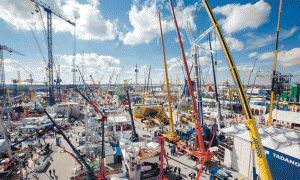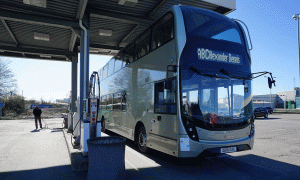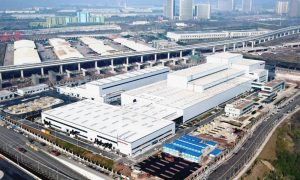Volvo Trucks launches auto traction control for FMX
Volvo claims world first in using hauler technology for its construction trucks

Volvo Trucks has claimed a world first in introducing automatic traction control for its FMX model, the mainstay of its offering to the construction sector.
The system is already used by Volvo Construction Equipment for articulated haulers, and will be standard on all FMX models with front wheel drive capability sold in the Middle East.
It automatically activates front-axle drive when sensors on the rear wheels detect a loss of traction. The feature saves fuel and ensures better manoeuvrability by not having drivers engage the front-axle differential prematurely, according to Jonas Odermalm, Construction Segment Manager at Volvo Trucks.
VIDEO: Volvo Trucks launches auto traction control in FMX model
“Many drivers connect front-wheel drive or differential lock in good time before a difficult section of terrain, in order to avoid getting stuck. Volvo Automatic Traction Control engages the front wheel drive when in motion, and only for the short time that it is really needed,” says Odermalm.
The feature is especially suited to construction trucks that regularly drive on difficult terrain, including sand. It automatically deactivates when the driver releases the gas pedal.
The Automatic Traction Control system is now standard on FMX vehicles that have a front-driven axle: the 4×4, 6×6, as well as 8×6 configurations, including Euro 3 trucks sold to the Middle East.
One result of the new traction control is the revelation that drivers frequently over-estimate how often they need the front diff lock, says Odermalm in a video produced by Volvo to demonstrate the technology.
The solution consists of software connected to the wheel-speed sensors, which detect and control wheel drive. When a rear wheel starts to slip, the power moves automatically to the front wheels without the truck losing torque or speed. A dog clutch activates the front-wheel drive in just half a second.
Because the front tires’ grip is concentrated on the steering right up until any critical situation, the driver can take advantage of the better manoeuvrability for as long as possible, while also avoiding extra fuel consumption and wear on the driveline and tires as a result of unnecessary engagement of front-wheel drive.
Other benefits include a lighter clutch that has fewer moving parts than a traditional solution with permanent all-wheel drive. If the driver encounters particularly rough ground, then it is possible to manually lock the other differentials at both front and rear.
VIDEO: Volvo Trucks launches auto traction control in FMX model

























